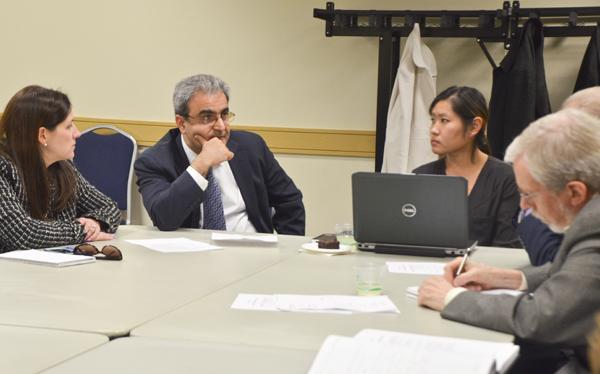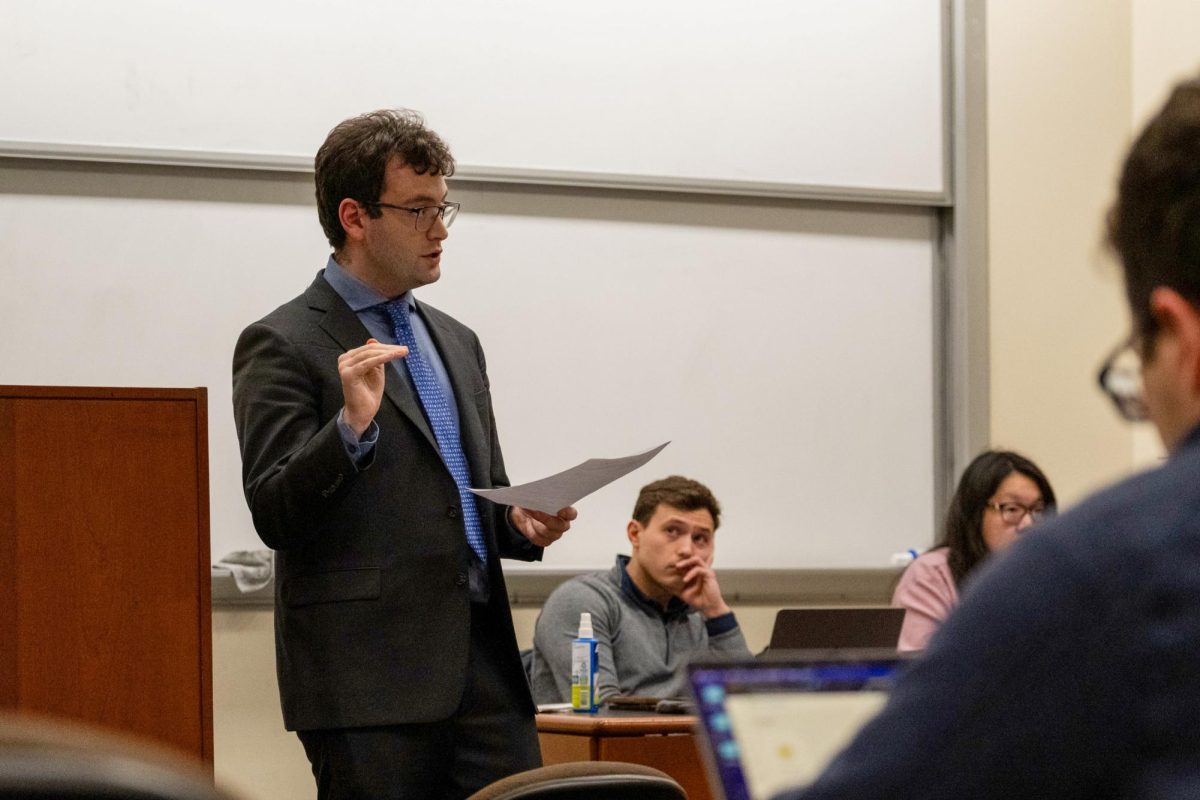The search for a director for the new AT&T Center for Indigenous Politics and Policy will begin next month, officials confirmed this week.
AT&T donated $450,000 last month to establish the CIPP after officials presented a funding proposal to the company. The center, housed in the College of Professional Studies, will be dedicated to research and education on Native populations. Officials said that AT&T will continue to fund the center for the next three years and other foundations will fund it later on.
Over the past decade, AT&T has contributed more than $7 million to support education for indigenous peoples. The donation to the University was in honor of Native American Heritage month in November.
Gregory Lebel, an assistant professor of political management and the director of the Native American Political Leadership Program, said in an email that the center will focus on issues Native communities face, the political realities surrounding those issues and political processes that can overcome such challenges.
“GW has established a strong record of commitment to diversity and these efforts to address issues facing indigenous peoples in the United States are part of that effort,” Lebel said. “The center provides the opportunity and means to marry this commitment with GW’s unique position as an institution of higher learning with a strong vein of political expertise and influence.”
AT&T has collaborated with GW before: The tech conglomerate established the University’s Native American Political Leadership Program in 2006 and the INSPIRE Native Teens Pre-College Program in 2013. Both programs award full scholarships to Native American high school students to allow them to take classes at GW, learn about politics and have mentorship opportunities.
Both of the existing programs will eventually be run through CIPP, Lebel said.
Lebel said the new center will continue GW’s role in supporting Native students on campus, addressing the politics and policy that surround the lives of indigenous people and will be a catalyst to increase the number of Native students at GW. And while the programming specifics will be at the discretion of the director, research and learning will be the center’s overall goals.
Native American students make up the smallest ethnic population at the University, with only 10 enrolled undergraduate American Indian or Alaska Native, non-Hispanic students, according to Oct. 2015 data from the Office of Institutional Research.
“The very presence of CIPP at GW goes a long way toward giving recognition and voice to GW’s Native student population,” Lebel said.
Ali Eskandarian, the dean of the College of Professional Studies, said in an email that while putting the grant proposal together, several faculty members who are researching related topics showed their interest and support for the center.
“It would be our intention to tap into the existing expertise within GW as the goals of the center are further elucidated,” Eskandarian said.
Jennifer Bertolet, a professional lecturer of history who focuses on Native American history and culture in her research, said she is enthusiastic about the center’s potential to bring attention to Native American issues and to encourage students to do related research.
“I hope that the center will raise awareness, within the GW community and beyond, of the on-going policy struggles that Native Americans still face with respect to their treaty rights, water rights, land rights and natural resources,” Bertolet said.
Bertolet said that beyond raising awareness and working toward policy solutions, the center should also provide infrastructure and training for faculty who study topics related to indigenous populations.
“Many GW students express a strong interest in policy matters and this center can offer information and training in an area of policy that students might not have considered,” she said.
Brian Barlow, the president of the GW Native Student Leadership Council, said that he hopes the center can successfully educate the student body and general public about Native Americans’ access to education and health care.
“Access to higher education is huge, mental and behavioral health, access to quality healthcare,” Barlow said. “As a center for policy, trying to establish true nation to nation relationships between tribes and the federal government is important.”
Barlow said the center could help present a more complete picture of Native American culture to a public that has unrealistic ideas of what it means to be Native American.
“Anything to help people learn a little bit more about tribal communities,” he said. “By and large, the American public is pretty ignorant to Indian country. Not in the media, nothing in pop culture, really – except for what’s appropriated. Most things that are ‘Native’ are pretty far from realistic.”







